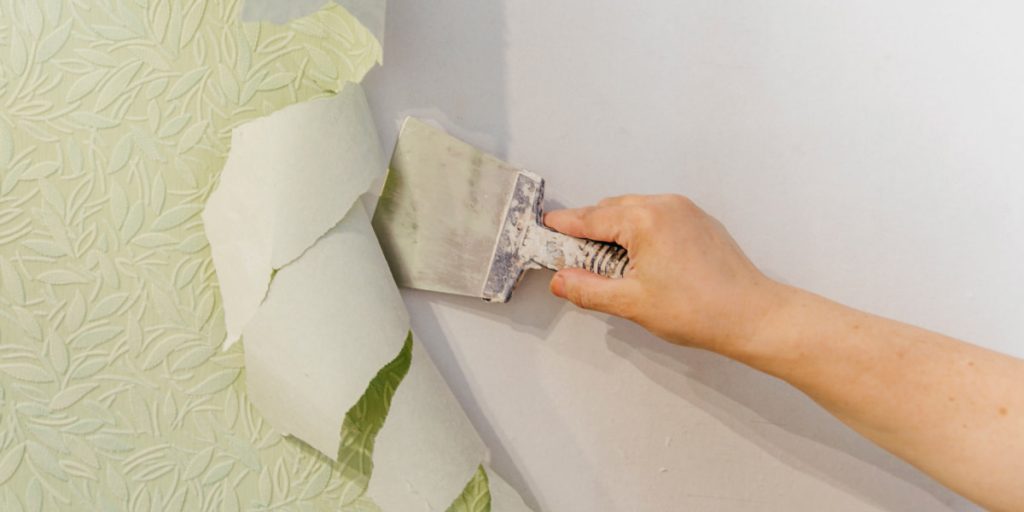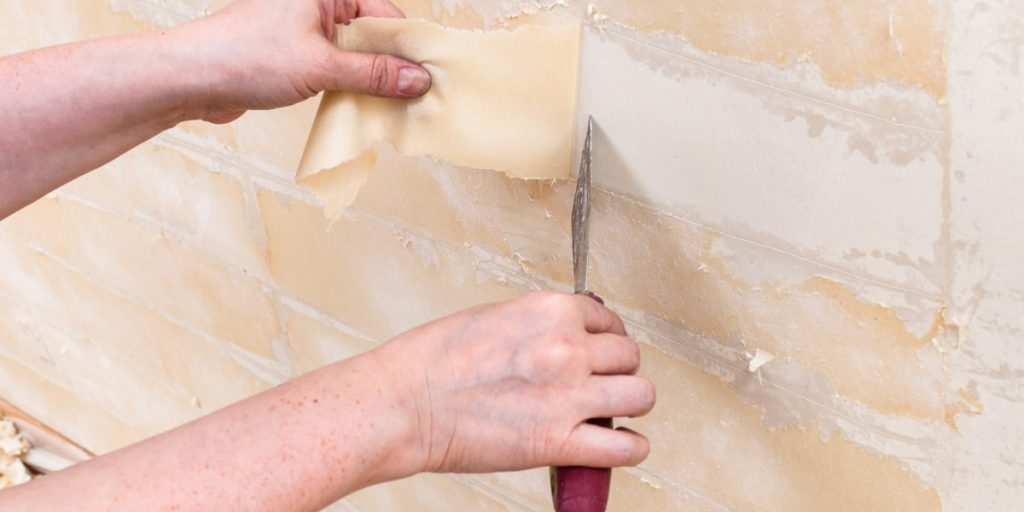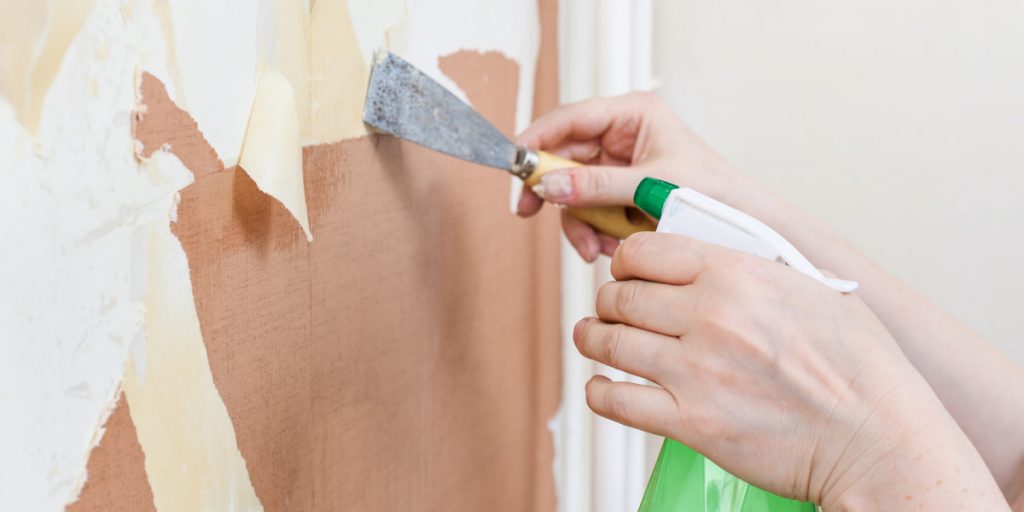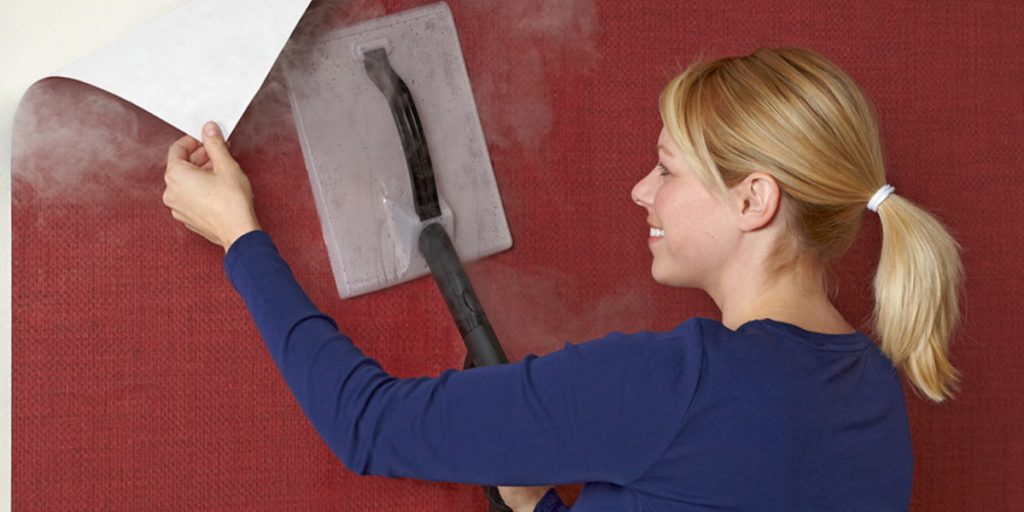Published on October 20th, 2022
Last updated on February 6th, 2023
How To Remove Painted Wallpaper?

In the past, it was common for renovators to use paint over wallpaper to cover room walls. Sometimes you can still see it today, but renovating and removing the old paint is not as easy as you’d like it to be. The question concerning the removal of painted wallpaper is posed by everyone who has encountered such a coating. Even professionals who know how to do it are forced to choose between different methods.
Methods for effectively removing painted wallpaper from plaster walls can be divided into the following groups:
- Mechanical: using tools.
- Chemical: using all kinds of solvents and detergents.
- Thermal: using heat.
Each method has advantages and disadvantages, so it is necessary to consider each case’s peculiarities.
How to Prepare to Remove Painted Over Wallpaper?

Removing the old wallpapers is not the most pleasant of processes. It’s also very messy. Therefore, it is necessary to prepare the room for such a process. It is better, to do it alone, so nobody will disturb or interrupt you:
- Remove all large furniture;
- Gather all remaining items, place them in the center of the room, and cover them with plastic wrap;
- Put the same plastic film on the floor and top up with paper or newspapers to prevent slipping;
- Protect the skirting board with film and masking tape;
- Switch off all electrical appliances if high humidity is expected;
- Place a cloth soaked in water at the entrance to the room. It prevents dirt from spreading between rooms;
- Prepare all necessary materials.
What Are the Ways for Removal of Painted Wallpaper?
Before deciding on a plan of action for removing wallpaper that has been painted over, you must assess the type of substrate. The substrate can be:
- concrete;
- brick;
- plastered;
- cement.
You should also pay attention to the paint on the wallpaper itself and the durability of the coating.
The planned budget is also an important parameter. Some methods require quite a substantial investment, while others are inexpensive, as painted wallpaper can be removed from the wall using improvised means.
Method #1: Mechanical Method

The mechanical method of removing painted wallpaper from plaster walls is the easiest and cheapest. It includes tools that are easily accessible: a grinder or drill with a special attachment, a spatula, a chisel, and even an axe.
An electric device is fast but very noisy and generates a lot of dust. In addition, to remove peeling wallpaper with these tools, you have to work in 1:20 mode – one minute of work and twenty minutes of waiting for the dust to settle.
Working with an axe is considerably less dusty. Using a small, sharpened tool to remove painted-over wallpaper is better. Then less effort is required to cut through the paint layer.
Before you remove old, painted wallpaper from the wall, you need to damage it. To do this, make small, frequent cuts with an axe and apply warm water to the surface. This method is excellent for a plastered surface: it gets wet, and the painted layer of wallpaper is easily removed with the same axe.
Theoretically, painted wallpaper removal can be done with a trowel or broad chisel. However, this method is only suitable if the paint doesn’t hold up well and practically falls off on its own.
Method #2: Chemicals

Even paint firmly stuck to a wall can be removed using chemicals. The idea is to apply a substance to the surface to be treated that, through chemical reactions, allows the paint layer to be easily peeled off.
The following methods perfectly suit removing wallpaper that has been painted over:
- The cleaners offered by modern manufacturers.
- Any industrial solvents.
- A mixture of soda ash, chalk, and lime.
Special cleaners are fast and effective and can remove painted-over wallpaper. Manufacturers guarantee the high quality of their products. The only disadvantage of this method is its high price. Therefore, an alternative can be the usual solvent. It is much cheaper, but unlike modern formulations, which are often universal, it does not work on all types of paint.
Method #3: Thermal Method

The thermal method involves heating the wall for painted wallpaper removal. A hairdryer should be available for this purpose.
Heat the surface by directing a stream of hot air until the coating swells up. You can use a spatula to remove the paint. The advantages of this method are the absence of dust, dirt, and noise. However, there are disadvantages. For example, heating cannot be used near sockets and electric wires.
In addition, coating materials generate toxic and harmful volatile compounds when heated, so it is vital to take care of respiratory protection and good ventilation in the room. It is also a fire hazard, so it should be used with extreme caution, following safety procedures and having fire extinguishing equipment on hand, just in case.
Bottom Line
Removing painted wallpaper from plaster walls can be difficult, but sooner or later, the coating will come off, especially if you have enough patience, desire, and free time. Relatively few tools and materials will be needed. The most important thing is always to remember to wear respiratory protection. And don’t forget to use our guide to put the new wallpaper!
FAQ
How to remove wallpaper that has been painted over?
The best way to remove it and wallpaper are to blot and scrape it off. If the wallpaper is quite old and covered in many layers of paint, you may have to replace the plasterboard underneath.
How to remove painted wallpaper from plaster walls?
It is best to use unique solutions to remove old wallpaper from a plaster wall, which is widely available in construction shops. Mechanical cleaning is easy with a metal trowel with a working width of 10-15 cm.
What happens if you remove painted wallpaper badly?
The old coating will swell or react chemically with the new material if it is not removed correctly. You won’t be happy with the result. You will lose time, nerves, and money on materials.
Is it expensive to remove painted over wallpaper?
In general, it is not at all expensive, although it depends on the method you choose. Also, if you call in a professional, it may be more expensive.


